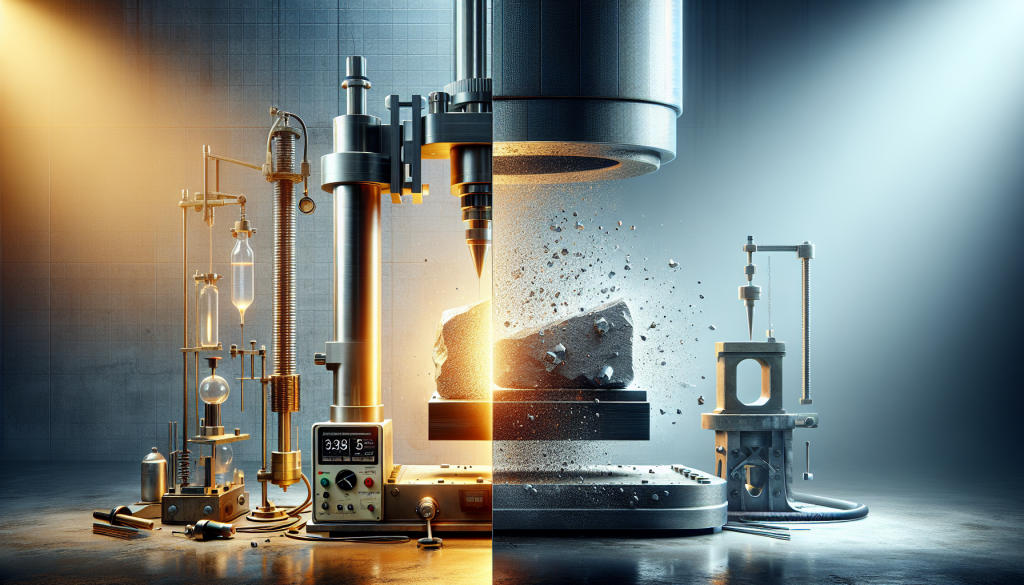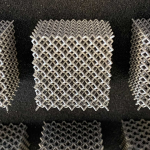
Key Takeaways
- Impulse Excitation Technique (IET) delivers accurate, non-destructive measurement of material properties such as Young’s modulus, enabling efficient quality control without compromising sample integrity.
- Destructive testing destroys the sample to determine its mechanical properties, often resulting in higher material costs and waste for routine testing tasks.
- IET offers rapid, repeatable results and is ideal for both metals and ceramics, streamlining workflows compared to the labor-intensive nature of destructive tests.
- Choosing between impulse excitation and destructive testing depends on your need for sample preservation, test accuracy, speed, and compliance requirements.
Understanding Impulse Excitation: A Modern Take on Non-Destructive Testing
Impulse Excitation Technique (IET) has quickly become a preferred method for measuring the mechanical properties of solids in laboratories and production environments. Unlike traditional mechanical tests that compromise or destroy the sample, IET leverages the natural resonance of a material to determine key properties such as Young’s modulus, shear modulus, Poisson’s Ratio and internal friction.
How Impulse Excitation Testing Works
Impulse excitation involves striking a specimen with a small impact and capturing its vibrational response. These vibrations, resonant frequencies and dampings, are recorded using sensitive detectors. Dedicated tools, such as the Grindosonic MK7, capture and analyze these signals to reveal important mechanical properties, all without damaging the sample. For a comprehensive guide on measuring Young’s modulus non-destructively using IET, check this detailed step-by-step resource.
- Non-invasive: No permanent sample alteration or destruction.
- High repeatability: Test the same component again and again.
- Applicable materials: Metals, ceramics, composites, and more.
- Fast turnaround: Results in seconds, aiding rapid process adjustments.
Destructive Testing Explained
Destructive testing methods,such as tensile, impact, and hardness testing, remain deeply embedded in manufacturing standards, especially when compliance with recognized protocols is required. These tests apply loads or stresses to a sample to the point of fracture or permanent deformation. Once testing is complete, the specimen is often rendered unusable.
Common Types of Destructive Testing
- Tensile Testing: Stretches a material until it breaks, capturing strength and ductility.
- Impact Testing: Determines energy absorption before fracture (e.g., Charpy or Izod tests).
- Hardness Testing: Measures resistance to penetration or local deformation.
While highly precise, these methods incur recurring costs by destroying samples and often require extensive sample preparation and machine setup.
Comparing Impulse Excitation and Destructive Testing: A Side-by-Side Analysis
| Aspect | Impulse Excitation Technique (IET) | Destructive Testing |
|---|---|---|
| Nature of Test | Non-destructive, repeatable | Sample is destroyed, single-use |
| Time Efficiency | Rapid (seconds to minutes) | Slower setup and processing |
| Sample Preservation | Specimen remains intact | Specimen is damaged or destroyed |
| Cost | Lower (reusable samples) | Higher (new samples required) |
| Data Provided | Elastic properties (modulus, Poisson’s ratio, damping) | Ultimate strength, ductility, fracture behavior, hardness |
| Applications | Quality control, process monitoring, research | Material certification, compliance, detailed failure analysis |
Choosing the Right Method: Key Decision Criteria
Both testing methods are crucial in material science and engineering, but their suitability depends on:
- Need for Sample Integrity: If preservation is critical (e.g., limited prototypes, in-service components), IET is the clear winner.
- Desired Properties: For elastic parameters (modulus, damping), non-destructive tests excel. For fracture or ultimate strength, destructive testing is necessary.
- Throughput and Cost Concerns: For high-volume screening and routine checks, IET offers major efficiency and cost advantages.
- Compliance and Industry Standards: Some regulatory frameworks require destructive results; here, destructive methods are non-negotiable.
Case Study: Leveraging IET in Modern Manufacturing
Consider a ceramics manufacturer aiming to monitor quality while minimizing waste. Using IET, the team routinely checks batches, ensuring modulus consistency with no lost inventory. Only occasional destructive tests back up the non-destructive data or satisfy certification requirements, dramatically reducing costs and environmental impact.
Why Measuring Reality Matters: Beyond Assumptions
Impulse excitation delivers real, actionable data, capturing how your actual material, not a theoretical ideal, behaves under stress. Too often, destructive tests are reserved for the design phase or sporadic compliance checks, leaving assumptions in day-to-day control. With IET, every production run can be verified and optimized on the fly, enabling true data-driven decision making.
Looking to further optimize your manufacturing processes with automation? Learn how AI automation enhances data analysis and decision-making to bring additional value to your quality control loop.
Integration and Future Trends: Where Impulse Excitation Fits
The demand for non-destructive testing like IET is on the rise, particularly in advanced manufacturing industries such as aerospace, automotive, and energy. Integration with AI and automation platforms is enabling real-time process feedback, predictive maintenance, and smarter product development cycles in these industries, as well as industries like consumer goods production.
Further Resources
- ASTM D7967-17: Standard Test Method for Impulse Excitation of Mechanical Resonance
- How to Measure Young’s Modulus Non-Destructively Using IET
FAQ
What is the main advantage of impulse excitation over destructive testing?
Impulse excitation provides accurate mechanical property data without damaging the sample, leading to cost savings, higher testing throughput, and preserved sample integrity.
Which properties can impulse excitation measure?
Impulse excitation can measure Young’s modulus, shear modulus, damping (internal friction), and Poisson’s ratio of a material, all non-destructively.
Is destructive testing still required if I use impulse excitation?
Destructive testing is sometimes required for compliance or certification purposes, but routine quality control and monitoring can often rely on impulse excitation for efficiency and cost-effectiveness.
Can impulse excitation be used for both metals and ceramics?
Yes, impulse excitation is suitable for a wide range of materials including metals, ceramics, glasses, and composites.
How fast is impulse excitation testing compared to destructive methods?
Impulse excitation tests are typically completed in seconds to minutes, much faster than most destructive mechanical tests which require sample preparation and longer processing times.
Next Steps: Unlock Precision in Your Testing
Ready to move beyond assumptions and measure the true properties of your materials? Discover how Grindosonic’s impulse excitation solutions can transform your quality control and R&D workflows. Contact our experts today to discuss how we can tailor a solution for your industry, materials, and compliance needs.



